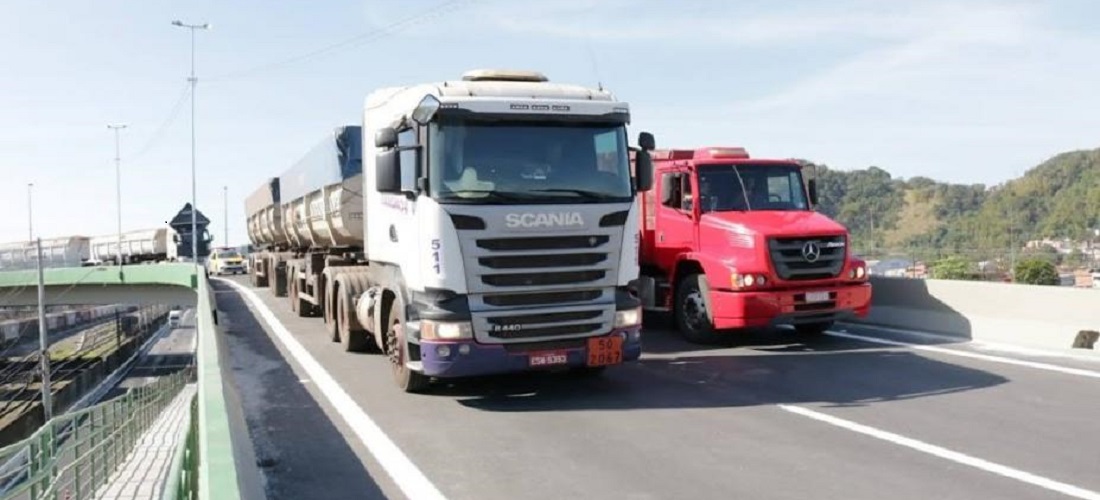
Linha Verde: new road and rail connection to the Port of Santos could cost R$ 12 billion
Jul, 31, 2023 Posted by Lillian SmoakWeek 202332
About R$ 12 billion. According to the Institute of Engineering (IE), this is the amount that, if invested, will make it possible for the Linha Verde, a road and rail corridor that will connect the Baixada Santista to the Planalto, to go off the ground, creating an alternative to the Anchieta-Imigrantes System (SAI), which could reach saturation by 2035. Santos and Guarujá city halls charge for the construction of the third road and complementary works in the municipalities.
With a study completed in January 2022 by the Government of São Paulo, the Linha Verde road and rail project provides for the construction of a highway with eight lanes, four uphill and four downhill, and a railroad with two lines. The system would link Greater São Paulo to Baixada Santista, from the East Rodoanel, in the Suzano region, to the Cônego Domenico Rangoni Highway, in Guarujá, facilitating the flow of cargo on the Left Bank of the Port of Santos.
In a note, the State Secretariat for Partnerships in Investments reported that the possibility of building a third route “is still under evaluation” by the portfolio. Meanwhile, in the port sector, the alternative road connection to the SAI has been increasingly demanded, as the logistics chain is concerned with the possibility of saturation and wants alternatives that allow it to keep up with the pace of growth of the Port of Santos, the largest in the country and the main one in Latin America.
It is estimated that the Via Anchieta will have its capacity saturated by 2035. The road connection from Suzano has been studied by the IE since 2011. According to the coordinator of the Technical Division of Inland Navigation and Ports of the institute, José Wagner Leite Ferreira, it deals with It is “a multimodal system consisting of a highway including special lanes for a rail system with linear traction/motorization interconnecting the logistics platforms of Baixada and Planalto”.
The length of the final track should be 42 km. The institute estimates an approximate cost of BRL 12 billion, already including the infrastructure of lanes dedicated to the rail systems, also including works of art and tunnels, in response to Public Call Notice 1/2021, by the then State Secretariat for Logistics and Transport, from the previous government.
According to Ferreira, the institute also considered that the best way to make this project viable is a public-private partnership (PPP), with support from the State Government.
“Analyzing the operating data from the Port Authority of Santos (APS), in a horizon between 2030 and 2040, the movement will be above 200 million tons, equivalent to data from the Port of Antwerp today. Given the saturation of the only freight transport corridor, Via Anchieta, it is clear that it is impossible to respond to this demand. Therefore, the IE considers that the implementation of a second corridor is indisputable”.
The coordinator of the Technical Division of Inland Navigation and Ports of the IE stresses that the discussion on the subject is necessary at this moment because “a work of this complexity takes eight to ten years to complete. Furthermore, it is a national work, as Santos is the largest foreign trade corridor in our country”.
He also highlighted that “the hinterland of the Port of Santos covers mainly Minas Gerais, Mato Grosso and Goiás, in addition to this corridor constituting a vector of regional development, mainly of the Continental Area of Santos with the implementation of the Export Processing Zone (ZPE ) and Technological Park, logistics platforms in Baixada and Planalto, providing economic and social benefits, such as new employment and income poles”.
When asked if the agency and the State have discussed the Linha Verde, the coordinator replied that “preliminarily, the project has already been the subject of technical discussion with the State Government. Attempts to schedule new discussions have been attempted”.
Numbers in SAI
In the Anchieta-Imigrantes System (SAI), an average of 102 thousand vehicles circulate daily, considering the Serra stretch in both directions. Of this total, on average, 18,000 are commercial vehicles and 83,000 are passenger vehicles. The information is from Ecovias.
According to the concessionaire, “about the number of accidents, from January to June of this year, 199 occurrences involving trucks were recorded in the Serra section of the Anchieta and Imigrantes highways, and of these, 50% were without victims”.
Asked about the Imigrantes 3 project, which has been studied for about 10 years, Ecovias only said that it remains attentive to all infrastructure improvements that can be made to bring more safety and comfort to users.
“The concessionaire makes itself available to the granting authority to continue investing in Baixada Santista and in other stretches of the SAI, including, if it is in the interests of society and the government, to contribute with alternatives for a new transposition of Serra do Mar. We remain open to discuss alternatives and to present evaluations and studies already conceived on the subject”.
Project: Green Line
Route: Plateau-Baixada Santista, from Rodoanel Leste (Suzano) to Rodovia Cônego Domenico Rangoni Purpose: concession for the construction, operation, maintenance and exploitation of an alternative route to Via Anchieta with capacity saturation expected by 2035, and to innovate cargo logistics to the Port of Santos.
Distance: 42 km
Estimated cost: BRL 12 billion
Term: 8 to 10 years
Source: A Tribuna
To read the original article, visit: https://www.atribuna.com.br/noticias/portomar/linha-verde-nova-ligacao-rodoferroviaria-para-o-porto-de-santos-pode-custar-r-12-bilhoes
-
Ports and Terminals
Oct, 26, 2023
0
Container Terminal at Port of Fortaleza Triples Number of Scanners
-
Ports and Terminals
Sep, 30, 2024
0
Paranaguá Port: A Growing Gateway for Brazilian Exports
-
Ports and Terminals
Jan, 11, 2022
0
Antaq approves tariff restructuring of the Port of Santos
-
Economy
Nov, 04, 2021
0
Brazil-China trade advances towards US$ 140 billion level

